Categories
Latest Updates
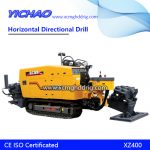
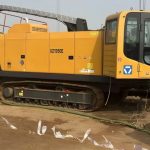
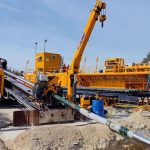
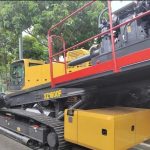
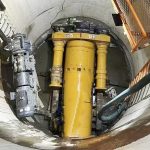
1 Introduction
The mud pump is a kind of reciprocating plunger pump, which converts the rotary motion of the motor into the reciprocating linear motion of the crosshead and the piston through the crank connecting rod mechanism, and compresses the low-pressure mud into high-pressure mud. During the construction of directional drilling, the mud with high viscosity, high specific gravity and high sand content is transported into the hole at high pressure to cool the drill bit, wash the hole wall, break the rock, and carry out cuttings when returning from the hole, which is a directional drilling method. One of the most important equipment for drilling construction.
2. Working principle
The working process of the mud pump is divided into two steps: the suction process and the discharge process.
It is customary for us to divide the mud pump into two parts: the hydraulic end and the power end. The power end is used to transmit power and convert the movement mode and speed. Provide suitable power for the liquid end; the liquid end is used to convert mechanical energy into liquid internal energy to transport mud.
3. Structural composition
1) Power end
base
frame
pinion shaft assembly
Large gear shaft assembly
crankshaft assembly
cross head assembly
DC motor
2) Liquid end
cylinder
Suction valve, discharge valve
Cylinder liner, piston, piston rod (plunger, packing and cylinder liner)
Suction pipe, suction air bag (reduce water hammer phenomenon)
Discharge pipe, discharge filter assembly
Exhaust air bag l safety valve
Cylinder head, valve cover
Spray pump assembly
3) Auxiliary parts
Lubrication mechanism
chain lubrication
Lubrication of gears and bearings
Cylinder liner cooling and lubrication
Nitrogen pack
Its function can effectively reduce the pressure fluctuation of the discharge system, so as to obtain a more uniform liquid flow.
safety valve
When the mud pressure exceeds the set pressure of the pump, it can quickly cut off the safety pin and bypass the pipeline
Open, the mud pump discharges pressure, thereby protecting the pump body.
4. Basic performance parameters
1) Theoretical displacement of the pump:
The volume of medium discharged by the pump in unit time is called the theoretical average displacement of the pump, referred to as the theoretical displacement of the pump, and is represented by Q.
2) The working pressure of the pump
Usually refers to the liquid force on the unit area of the pump outlet, referred to as the pump pressure, expressed as p.
3) Rated power and efficiency of the pump
The energy transmitted by the power machine to the driving shaft of the pump per unit time is called the input power of the pump; the input power when the pump works and the rated stroke is called the rated power of the pump, expressed in N;
The energy added by the liquid in a unit time after the action of the pump is called effective power, also known as water power, expressed in Nr, and the efficiency of the pump is the ratio of the effective power to the input power.
4) Punch times
Also called pump stroke, it refers to the number of reciprocations of the piston per unit time, represented by n.
5) Stroke length
Refers to the reciprocating distance of the piston, represented by S.
As an important equipment for directional drilling construction, the mud pump transports circulating high-pressure mud into the hole during operation, flushes the hole wall, breaks the rock, cools and lubricates the drill bit, and carries the cuttings back to the outside of the hole.
1. Installation of mud pump
The mud pump should be installed on the base that is horizontal or slightly inclined to the hydraulic end (the inclination is less than or equal to 3°) to facilitate the flow of lubricating oil.
The installation position of the pump should be as low as possible, and the position of the mud pool should be as high as possible to improve the suction efficiency of the mud pump.
The inlet end of the suction pipe of the pump should be about 300mm higher than the bottom of the mud pool, and the inner diameter of the suction pipe must be the same.
Install the safety valve and discharge manifold correctly according to the requirements of the instruction manual.
Securely support all suction and discharge lines from unnecessary stress and also to reduce vibration, never allow lines to hang from the pump without adequate support.
2. Preparations before the first startup
Check the bottom of the power end frame, drain the lubricating oil and clean the oil sump.
Check whether the clearance between the cross head and the upper and lower guide plates is acceptable.
Check whether the cooling lubricant in the water tank of the spray pump meets the requirements.
Check all threaded connections for tightness and for debris inside the pump.
Check that all valves on the mud line are in the correct position.
Check whether the inflation pressure of the exhaust air bag is between 4±0.5MPa.
Open the inlet and outlet valves of the spray pump system and irrigation system.
Check whether the safety valve and pressure gauge are complete and sensitive.
Fill the suction pipe cavity with water or mud and exhaust the air.
3. Start
It should be started at a low speed and gradually increased to improve the volumetric efficiency.
When high pump speeds are required, an irrigation pump must be used.
Check whether the power end lubricating oil pressure gauge reading is normal.
Pay attention to check the temperature of each part, and there must be no local overheating.
Start the pump must contact the relevant operation and inspection personnel.
The inspector must watch the pressure change on the pressure gauge when the pump is turned on.
4. Monitoring of the pump during operation
It should be started at a low speed and gradually increased to improve the volumetric efficiency.
When high pump speeds are required, an irrigation pump must be used.
Check whether the power end lubricating oil pressure gauge reading is normal.
Pay attention to check the temperature of each part, and there must be no local overheating.
Start the pump must contact the relevant operation and inspection personnel.
The inspector must watch the pressure change on the pressure gauge when the pump is turned on.
1. Daily maintenance and inspection of mud pump
Correct and timely maintenance of the mud pump is a necessary measure to ensure the normal operation of the mud pump and prolong its life. For the use of any pump, attention should be paid to this link.
uDaily maintenance uWeekly maintenance uMonthly maintenance uAnnual maintenance uOther things that need to be paid attention to in maintenance.
2. Daily maintenance
Check the oil level at the power end after stopping the pump.
Observe the working condition of the cylinder liner and piston. If it is found that the leaked mud exceeds the normal limit, the new cylinder liner and piston must be replaced.
Check the cylinder liner cavity, if there is a large amount of mud sediment, it should be cleaned.
Check whether the water in the water tank of the spray pump is enough, and replenish it in time, replace the cooling water when it is polluted, and clean the water tank at the same time.
Check whether the inflation pressure of the exhaust air bag meets the requirements.
Regularly check the reliability of the safety valve.
Loosen the piston rod clamp every day, turn the piston about a quarter of a turn, and then tighten the clamp.
Before tightening the cylinder head and valve cover, fill in grease in the screw thread, and check for looseness every 4 hours.
3. Weekly maintenance
Remove the valve cover and cylinder cover once a week, remove the sludge, clean it, apply molybdenum disulfide complex calcium-based grease, and check the inner sleeve of the valve guide sleeve, if it is obviously worn (the gap between the valve guide rod and the guide sleeve exceeds 3mm) should be replaced.
Check the use of the valve and valve seat, and replace the severely worn or punctured valve body, valve rubber and valve seat (when replacing the valve seat, pay attention to replacing the valve body at the same time).
Check the piston lock nut, if it is corroded or damaged, it should be replaced (because generally after the nut has been tightened three times, the sealing ring embedded in it has lost its locking ability).
Put water from the plug of the drain hole cover once until oil is seen.
4. Monthly maintenance
Check all studs and nuts on the liquid end. For example, the flange nuts of the cylinder head, the nuts connecting the cylinder and the frame, and the connecting bolts and nuts of the suction pipeline and the discharge pipeline, etc. If there is looseness, it must be re-tightened according to the specified torque.
Check the sealing ring in the middle tie rod stuffing box. If it is worn, it must be replaced, generally at least once every three months. When replacing, pay attention to the orientation of the oil seal. ØRemove and clean the filter cartridge installed in the discharge filter screen.
Every six months, replace the dirty oil in the power end oil sump and crosshead settling oil sump and clean these sumps at the same time.
5. Annual maintenance
Check whether the crosshead guide plate is loose and whether the running clearance of the crosshead meets the specified requirements, which can be adjusted by adding a gasket under the guide plate. When disassembling the crankshaft assembly, the crosshead can be rotated 180° before use.
A full inspection of the entire pump every two or three years is recommended. Check whether the main bearing, eccentric wheel bearing, cross head bearing and pinion shaft bearing are worn or damaged. If they cannot be used continuously, they must be replaced with new ones.
Check the wear of the gears. If the wear is serious, the crankshaft and the pinion shaft must be turned around and installed at the same time, and the unworn side of the tooth surface should be used.
6. Precautions
Before installing the clamp, the 25° cone surface must be wiped clean.
When replacing the cylinder liner, the cylinder liner sealing ring must be replaced together.
After the pump is stopped in winter, the mud in the valve cavity and cylinder liner must be cleaned and released.
Each inspection window hole of the pump should be covered and sealed to prevent lime and sand from mixing into the lubricating oil.
The exhaust air bag can only be filled with inert gas such as nitrogen, and it is strictly forbidden to fill it with flammable and explosive gas. such as oxygen and hydrogen.
